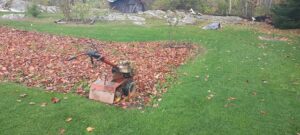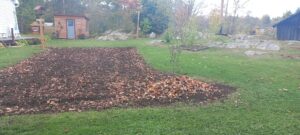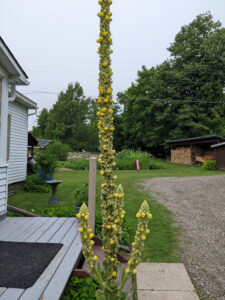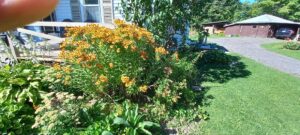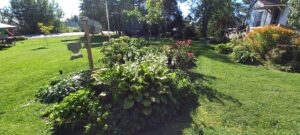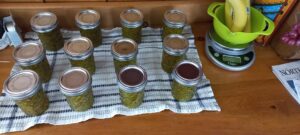Good Morning! The day’s just getting started, and it’s already looking mighty fine.
However, it is a touch foggy in some areas, which should clear out when the sun manages to break through. Now in saying that it looks as if we are in for some more rain tomorrow and into Wednesday, but after that things start to warm up a bit, and we will be seeing a lot more sunshine. At the moment, you could say we are in transition stage from spring to summer. Which is normal for our area. But things were a touch dry, and I was hoping for some rain as we planted our vegetable gardens, and nothing could be better than a nice rain to get them settled into their new home. And I have to say they are doing quite well.
On another note, yesterday my wife and I made a trip to North Bay as we were in need of a few things. We ended picking up, more than we needed, had a pizza at East Side Mario’s, grabbed a coffee at a local shop, and then headed home feeling a bit poorer. Man, things are so expensive these days. And another thing we noticed is that people are in a real hurry. A few times, folks bumped into my shopping cart, telling me to get a move on. I’ve heard of road rage with folks getting upset, but now I see it has moved onto shopping cart rage. Who knew grocery shopping would become so extreme. But all in all, other than my wife getting her hair wet and looking like a shaggy dog, as it was raining and feeling a bit poorer, we had a great day.
Highway 522 we noticed was quite busy yesterday with a lot of campers trucks, boats and ATV’s coming into our area.
Wisdom I’ve learned growing up : Don’t let a small weed turn into a big one. Pull it out fast and keep your fields clear. It ain’t always easy, but it’s got to be done if you want a good harvest.
With that I am off for my morning breakfast that my lovely wife is making for me and I will then get to installing two new bearings to my water wheel that I made a month or so ago. Which should keep me busy for the morning, that is if the weather stays nice.
You all have a great day, and I will leave you with this: Life’s full of ups and downs, just like the seasons. You have to roll with it.
Fishing Times For Sunday
05/26/24
Major Times
2:42 AM-4:42 AM
3:12 PM-5:12 PM
Minor Times
–:—–:–
7:06 AM-8:06 AM
Day Rating: Not the greatest day for fishing. I give it a 1-Star rating out of 5 for catching a few. But as I always say… you never know till you throw that line in the water.
Fishing Tip of the Day: When you’re out on the water trying to catch some fish, remember to keep the noise down. Fish get mighty skittish when they hear loud sounds or see too much commotion. So, keep your voices low and the racket down to a minimum if you want to reel ’em in. GW


